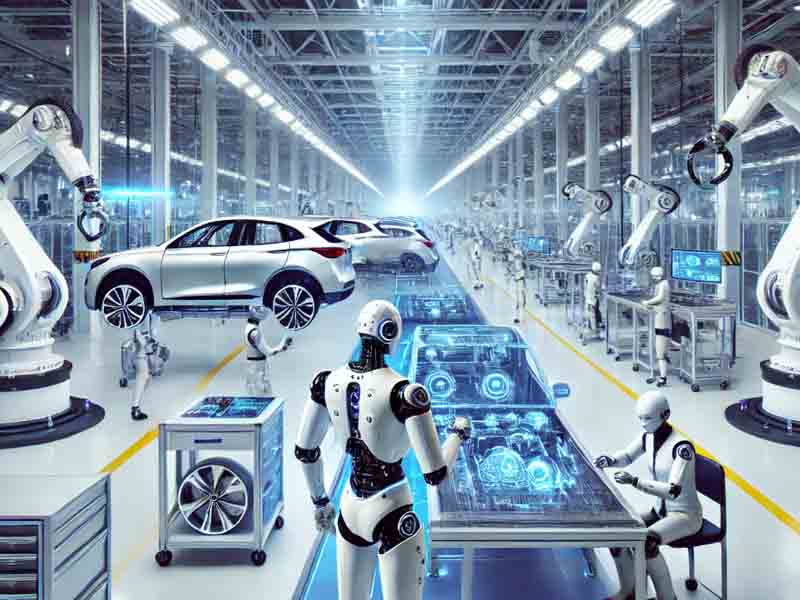
Arcadiadaily – Humanoid robots have officially entered the world of automobile production in China. For the first time, these advanced robots are working alongside human employees in car manufacturing plants, marking a significant milestone in robotics and automation. This breakthrough is expected to redefine efficiency, precision, and labor dynamics in the industry.
Chinese automakers have long invested in automation, but humanoid robots bring a new level of adaptability and intelligence to the production line. Unlike conventional industrial robots, these humanoid machines can perform complex tasks, adjust to unexpected variables, and even collaborate with human workers in ways that were previously unimaginable.
Humanoid robots are designed to mimic human movements, allowing them to take on tasks that require dexterity and problem-solving skills. In Chinese car factories, these robots are now assembling parts, conducting quality inspections, and assisting in logistics operations. Their ability to integrate seamlessly into existing workflows makes them a game-changer for manufacturers aiming to enhance productivity.
“Remanufactured Diesel Parts: Affordable & Eco-Friendly”
One of the key advantages of humanoid robots in car manufacturing is their ability to work with high precision while reducing the risk of human error. Additionally, their presence alleviates the need for human workers to engage in physically demanding or hazardous tasks, improving overall workplace safety. As artificial intelligence (AI) evolves, these robots learn and improve their efficiency over time, making them even more valuable assets to the industry.
The introduction of humanoid robots in Chinese automotive plants is only the beginning. Experts predict that in the coming years, more industries will adopt these robots for various applications. From electronics assembly to logistics and beyond. As the technology advances, the cost of Robots decreases. Making them more accessible to a wider range of manufacturers.
Despite the promising future, the rise of humanoid robots also raises questions about the future of human labor in manufacturing. While these robots can enhance efficiency, concerns about job displacement persist. However, industry leaders argue that instead of replacing human workers entirely. Robots will complement them by handling repetitive tasks, allowing humans to focus on more strategic and creative roles.
Robots are revolutionizing the automotive manufacturing sector in China, setting a precedent for industries worldwide. As they continue to evolve, their impact on efficiency, safety, and productivity will only grow. Paving the way for a more advanced and automated future.
“Writers Thrive on Medium: A Hub for Digital Creativity”
